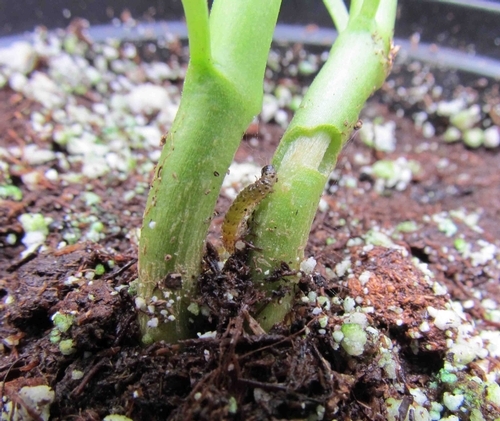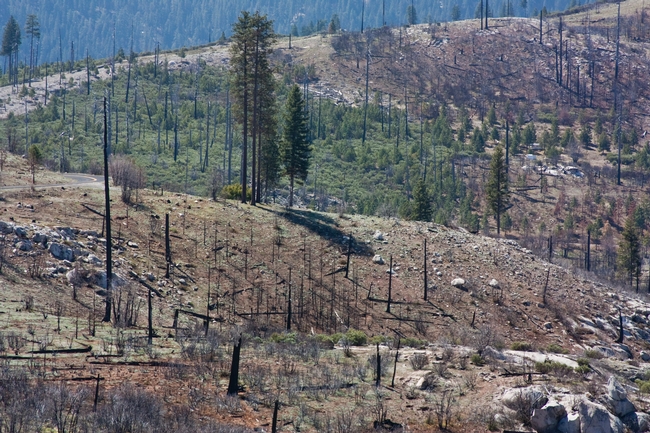From the UC Blogosphere...
Shall We Prey?
The California Buckeye (Junonia coenia), with its bold eyespots and white bars, is an easily recognizable butterfly. The...
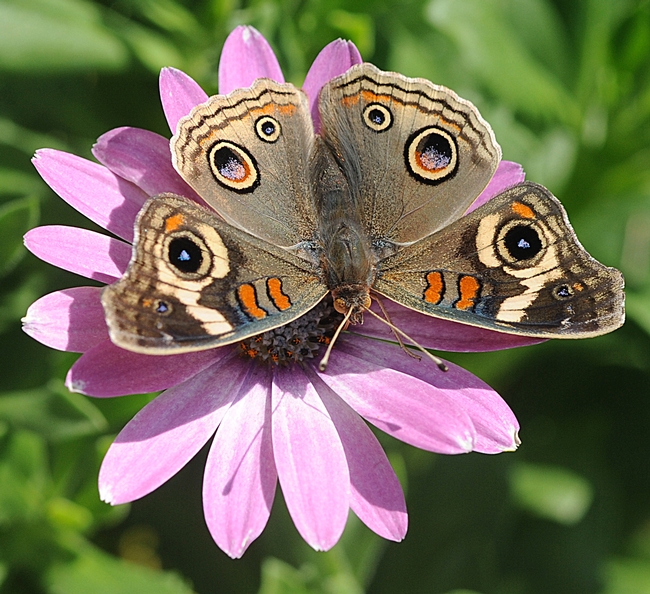
Buckeye spreads it wings on an African daisy. (Photo by Kathy Keatley Garvey)
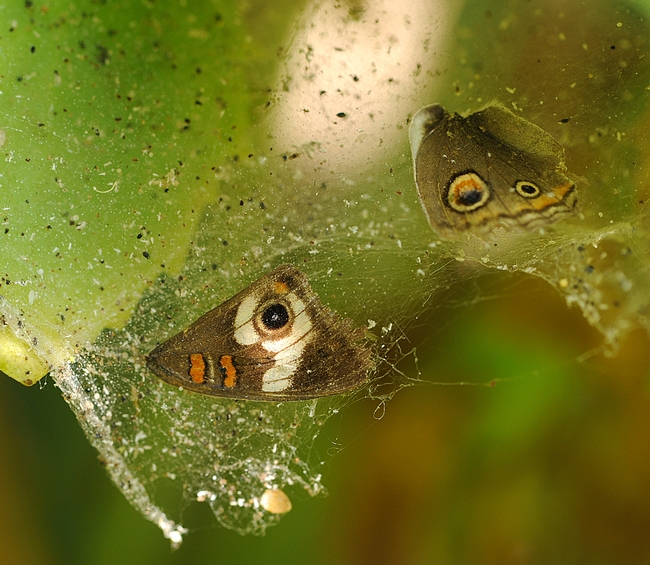
Shattered Buckeye, probably the work of a praying mantis. (Photo by Kathy Keatley Garvey)
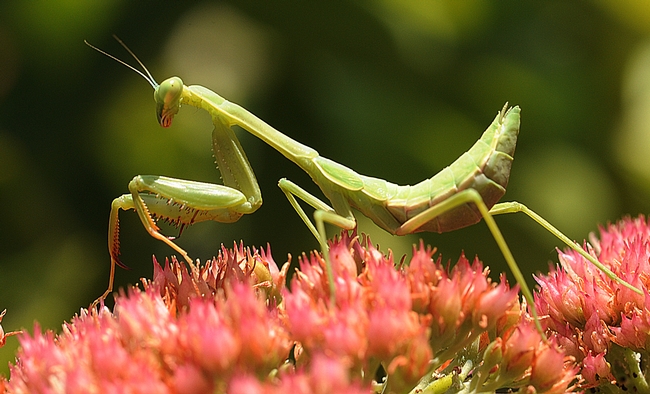
The predator? Could have been this praying mantis. (Photo by Kathy Keatley Garvey)
Cooling cattle; European pepper moth examined
For an article "Should Wyoming livestock and ag adjust to climate?" in the Billings Gazette, reporter Paul Murray sought information about livestock animals' response to warmer temperatures from Frank Mitloehner, UC Cooperative Extension Specialist in the Department of Animal Science at UC Davis. Mitloehner talked about ways animals can cool down and discussed shade, fans, sprinklers and even alternative cattle breeds. "We're seeing more and more extreme weather. That is a tendency we're seeing more and more often. That can stress animals. Similar to animals in the wild, that can impact animals' reproductive ability and their performance," he told the reporter.
European pepper moth widespread in California
Surendra Dara for Western Farm Press
Western Farm Press published this article about European pepper moth by Surendra Dara, UC Cooperative Extension farm advisor in Santa Barbara County. Dara explains that the European pepper moth has been reported in several central and southern California counties. The pest prefers to feed at the plant base of crops such as corn, peppers, tomatoes, squash, strawberries and some ornamental plants. Dara has been appointed to the national Technical Working Group for European pepper moth, along with UC Cooperative Extension colleagues James Bethke and Steve Tjosvold.
Dara also wrote about this pest and shared photos of it on the UC Strawberries and Vegetables blog.
Skipping Along
In the big, beautiful butterfly world, the Fiery Skipper stands out as the most common urban butterfly in California.It may...
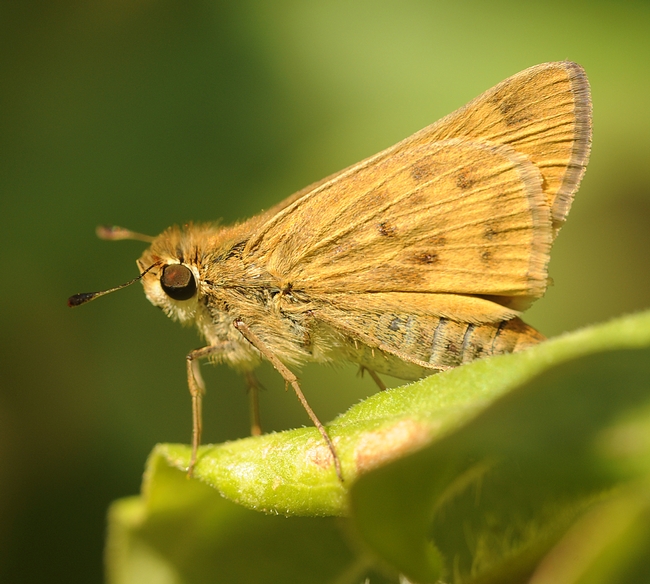
Close-up of Fiery Skipper (Hylephila phyleus). (Photo by Kathy Keatley Garvey)
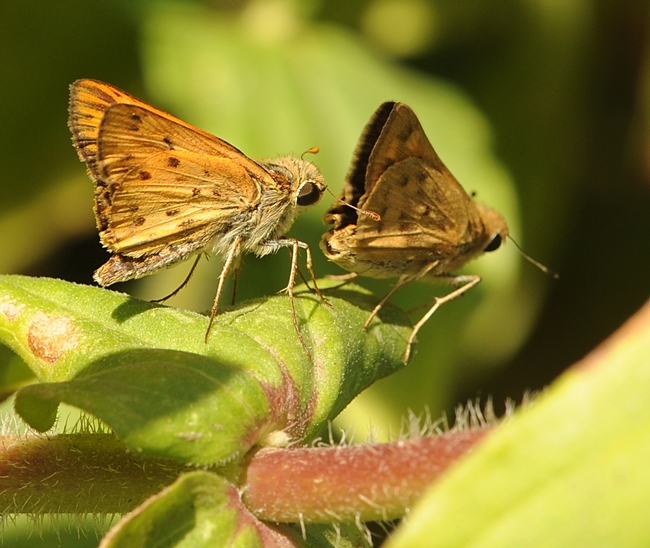
The male Fiery Skipper (Hylephila phyleus) often head-butts the female's genitalia during courtship, says noted butterfly expert Art Shapiro of UC Davis. (Photo by Kathy Keatley Garvey)
Solve economy, wildfires woes at same time
Forest restoration would be one way to improve our economy, writes researcher Tong Wu of the Center for Forestry and UC Berkeley on CNN's Global Public Square news website. He states that human interference has "made many ecosystems unnaturally susceptible to catastrophic wildfires" and that global warming will exacerbate the problem.
"In economic analyses of environmental management projects across the western United States, ecological restoration produced multiplier effects (the economic 'bang for the buck' of every dollar spent) that were higher than the estimated impacts of the 2009 government stimulus," he wrote.
Gulf Frit Making a Comeback
Yes, it's back.The Gulf Frit is definitely back.Back in September of 2009, butterfly expert Art Shapiro, professor of...
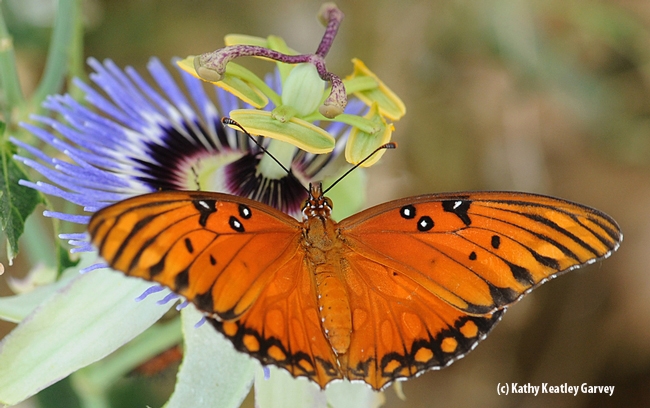
Gulf Fritillary butterfly on passion flower. (Photo by Kathy Keatley Garvey)
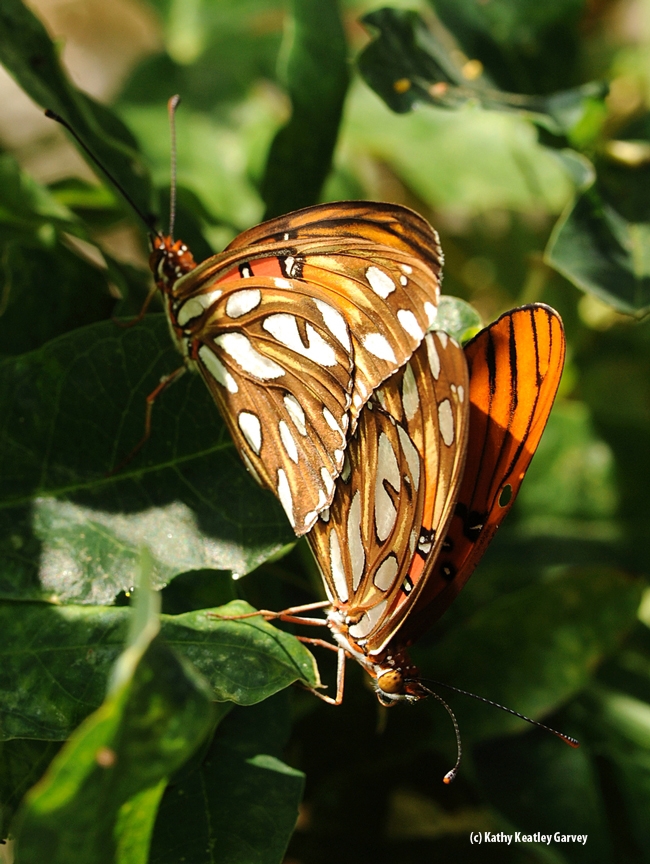
Gulf Frits breeding on passion flower vine. (Photo by Kathy Keatley Garvey)
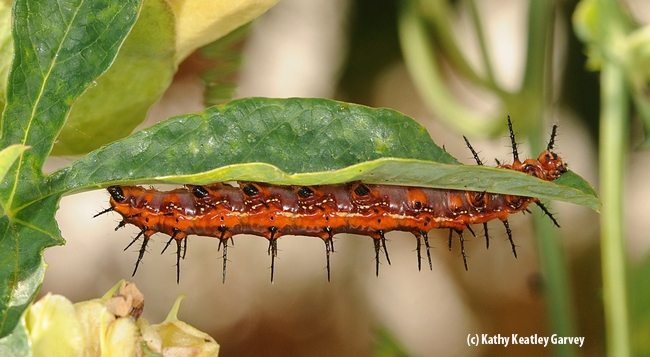
Hungry caterpillar munching passion flower leaves. (Photo by Kathy Keatley Garvey)
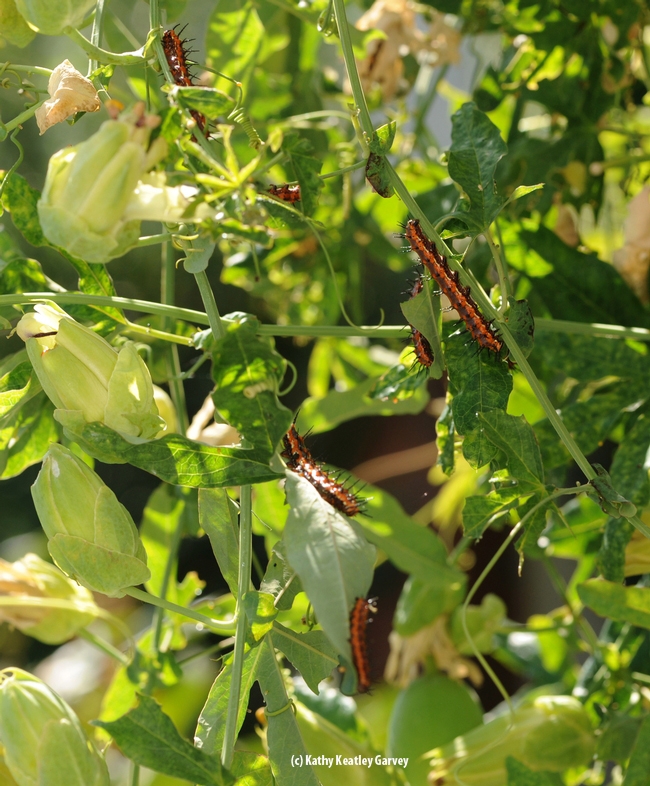
A "squadron" of caterpillars on a passion flower vine. (Photo by Kathy Keatley Garvey)



